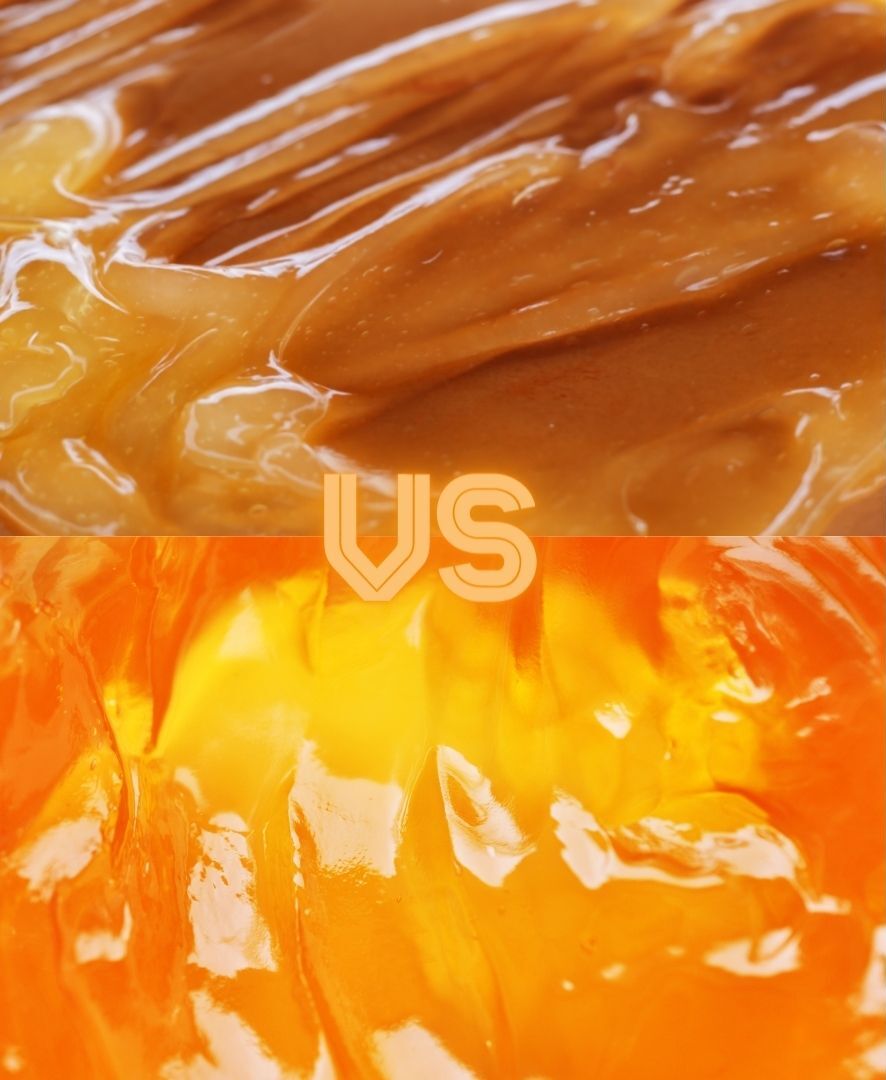

Honey has innumerable uses in food preparation and has been used for thousands of years in traditional medicine. In recent years, increasing globalization has made even more varieties of honey readily available, including manuka honey from New Zealand and Australia. This sweetener derived from the manuka bush (which only grows in these southern hemisphere nations) has been touted for its antibacterial and wound healing properties.
If you’ve seen manuka honey pop up on supermarket shelves, you may have wondered how it compares to plain old “regular” honey—and whether it’s worth its high price tag. Here’s a look at what the two have in common and the important ways they differ…
Nutritional Similarities and Differences
Nutritionally speaking, all honeys are similar, including regular honey and manuka honey. A quick look at the nutrition table is all you need to see that, on a nutrient level, manuka honey and regular honey are virtually indistinguishable. Calories, grams of carbohydrate, and grams of sugar are more or less equal between the two kinds of honey, while both contain no protein or fat.
Still, though you won’t find differences on their nutrition labels, this doesn’t mean manuka and regular honey come with identical health benefits. Because each honey is derived from different bees and different types of plants, each provides a unique health potential.
Health Benefits of Manuka Honey
- May Boost Wound Healing
Rather than drizzling manuka honey onto pancakes or oatmeal, you might be better off applying it directly onto your skin—especially if you have a wound. Multiple studies have explored the effectiveness of manuka in treating wounds, burns, and sores. There’s enough interest in its use as a wound-healing agent that it’s become a popular food-as-medicine treatment both in home remedies and medical formulations. Manuka honey is used in some medical-grade wound-care products which have all the impurities removed.
- Contains Antibacterial and Antimicrobial Activity
Manuka honey’s potential for wound healing comes down to its antibacterial and antimicrobial activity. Honey’s high sugar and low pH inhibit bacterial growth, so it’s no surprise that, dating back to ancient times, people have used it as a natural remedy not only for wounds, but for bacterial infections, sore throats, and even acne.
All honey has some antibacterial activity, but research suggests that manuka honey may have more than regular honey. And among manuka honeys, those with higher Unique Manuka Factor (UMF) seem to be stronger at combating bacteria. This rating, which ranges from 5 to 25, tells the concentration of three signature compounds (leptosperin, dihydroxyacetone and methylglyoxal) that appear to reduce bacteria.
- May Suppress Cough
No one enjoys that tickle-in-the-throat feeling that means a cough is coming on. Manuka honey might be a helpful fix. A potential benefit of honey, including manuka honey, is its role in cough suppression. Most research has focused on the effects of manuka and other kinds of honey on children's coughs. A 2018 Cochrane Review found that while there was no strong evidence for or against the use of honey to relieve cough in children, honey may be equal to or better than over-the-counter cough remedies or not treating the cough at all.
Health Benefits of Regular Honey
- May Suppress Cough
Manuka honey doesn’t own the market on tackling a cough. To keep coughing at bay, any type of honey may help—again, particularly for children. According to the American Academy of Pediatrics (AAP), honey helps to thin mucus and loosen coughs and older as a home remedy for coughing.
- May Reduce Seasonal Allergies
When runny nose, watery eyes, and sneezing have you reaching for an allergy pill, it may be worthwhile to add raw, local honey to your home pharmacy, too. A small study from 2013 found that people who ate 1 teaspoon of honey per kilogram of their body weight for four weeks experienced fewer seasonal allergy symptoms than a control group. More research is needed, though, to determine just how effective honey might be for relieving seasonal suffering.
Taste, Preparation, and Cooking
Since manuka and regular honey are, of course, food, the all-important question is how they differ for eating! If you’ve picked up a jar of manuka honey, you’ll likely notice right away that it tends to be thicker and more opaque than typical honey. In terms of taste, some people find manuka has an earthier or nuttier flavor than other honey, but its taste likely won’t be overwhelmingly different from any other honey you're familiar with.
As for cooking, there’s good news: The two honeys can be used interchangeably in culinary preparations, so you’re free to include manuka in oatmeal, smoothies, meat dishes, and more. However, there is one caveat. Medical-grade manuka honey should not be substituted with food-grade manuka honey and other varieties of honey for use in food and beverage preparations. Be sure to check the label of manuka honey to determine whether it’s food- or medical-grade.
Other Considerations
As tasty and useful as manuka and regular honey may be, it’s important to remember that all honey is nearly 100% sugar—so its health benefits aren’t an excuse to overdo it. And don’t forget that honey is never okay to feed to infants under one year of age, even in cooked or baked preparations. Botulism spores in honey can cause poisoning in children this young.
In comparing manuka and regular honey, the cost is another major factor. If you’re new to manuka, its price tag of up to $100 per jar might give you a serious case of sticker shock. If you simply want a sweetener to cook and bake with, regular honey will do just fine for a much lower price.
Finally, manuka and regular honey come with different grading systems. Whereas regular honey may receive a grade of A, B, or C, depending on its flavor, clarity, absence of defects, and percent soluble solids, manuka’s grading systems have to do with its content of the three compounds leptosperin, dihydroxyacetone, and methylglyoxal. The UMF grading system ranges from 5 to 25, based on concentration of these compounds. Another rating system called MGO looks solely at methylgloxal content and ranges from 30 to over 800.
The Takeaway
Manuka honey can be part of a healthy diet, and future research may further confirm its ability to heal wounds, soothe sore throats, or combat bacterial infections. For everyday eating, regular honey can add sweetness to plenty of delicious foods with benefits of its own.
And for natural skin care that also takes the benefits of manuka honey for the skin, there’s Wild Naturals. Shop all our manuka honey enriched products today!


